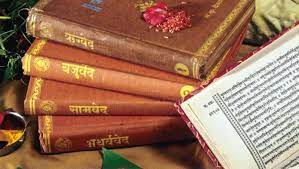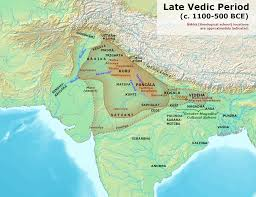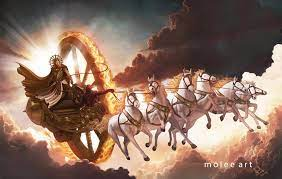Ancient India's Vedic Era - World's Glorious Time!
Hello Kids! Welcome back to KidsCast! Today we are with an amazing topic! You read it right from the title: Ancient India's Vedic Era - World's Glorious Time! So, let's get geared up for this interesting and informative article. Let's begin!
What are Vedas?
To understand this article, you will need to understand what are Vedas because as in the name, this period is very closely associated with Vedas. So, they are the earliest forms of writing in the world and in the Indian scriptures. These were composed in Vedic Sanskrit. These contain all the knowledge and ideals of Hinduism. It contains all the ideas, philosophies, historical events, and also the basic means and ideas of how to live a life peacefully. These are divided into 4 volumes namely:
1) Rigveda
2) Yajurveda
3) Samaveda
4) Atharvaveda
According to tradition, it is believed that the Vedas were based on very practical research and everyday observations and were composed by Lord Brahma and other rishis (sages). They have an estimated 20,379 mantras (hymns).

What does each contain?
Now, we will tell you what each Veda contains. So, let's begin:
Rigveda- It is the oldest volume of Vedas. It contains 1028 mantras (hymns). It is known to contain numerous secrets and clarifications about the origin of the world, the importance of the Gods, and a lot of advice for living a satisfying and successful life.
Yajurveda- It consists of 1975 mantras (hymns). It is known to contain all secrets, formulas, and rituals of how to practice any yajna or perform any ceremony according to the Hindu tradition.
Samaveda- It consists of 1875 mantras (hymns). It is known to contain prayers and verses that are used to invoke the supreme being (parbrahm) according to the Hindu tradition. It also contains Hindu traditional music and theatre.
Atharvaveda- Atharvaveda is considered to be one of the most unique Vedas. It consists of 730 mantras (hymns). It is completely based on providing solutions to all life's basic and practical problems.
Occurrence of the Vedic Age:
Ok, kids now let's start with our original topic Vedic Age. But it was necessary to understand Vedas before we started with the topic. So let's first talk about the occurrence. It is generally related to the late bronze age and early iron age. It began after the fall of the Indus Valley civilization. To read more about civilizations, Click Here!
According to reports, research and findings, it is usually described that this age occurred between 1500 BCE to 500 BCE.
Origins:
So, now let's talk about the origins and emergence of the period. So, the indigenous people of India called Aryans now started to inhabit the valley of Indus. From there, the ideas and teachings of Vedas spread into the country. Mainly, Aryans are associated with the spread of the ideas of Vedas. To be more specific, it was the Kuru Kingdom that was very closely associated with the Vedas. The Aryans are also associated with the rise of Hinduism, a system of rituals, practices, and architecture. They are also known to be great warriors and introduced the caste system and combat skills.

Golden Age:
So, the sub-title doesn't relate to the golden age but rather relates to the prosperity and well-being of the people at that time. The sages, especially Patanjali, are known to introduce Yoga to common people which acted as a very complex science of achieving extreme peace and god by doing simple poses related to nature. Also, people were very prosperous. Wars were fought with very high skills. People were known to give Dana to all poor. People had rich sources of wheat, cows, milk, and other materials. They were also known to be people of good health.
Mahabharata:
As you all would know about Mahabharata, it was another epic written in this period whose events took place. The same can be traced to the reports and findings of the archaeological sector. Mahabharata was written by Sage Veda Vyasa and contains more than 2,00,000 verses, making it the longest-ever composed text in the world.

Findings:
Many findings trace back its origin and confirm its occurrence. Some of them relate to the everyday life of the people including utensils, weapons, jewels, cloth, manuscripts, and inscriptions while others include buildings, chariots, and other royal equipment which is highly developed and rich. The findings clearly show that the Vedic age was a very well-developed society with new ideas of emergence and functioning and also a form of a cooperative society.

Urbanization and Culture:
As told to you kids earlier, culture was very rich was in a young age that is it was emerging in the parts of former Aryavrata (Now India). The Bhakti movement also relates to this era which creates a unique significance of this era in the history of Ancient India. So, after time, many new Kingdoms emerged which large pieces of land. This is referred to as urbanization as a part of the development of society. This all led to great importance in creating historical towns and cities.

So, kids, this is all for this article. Hope you enjoyed reading about the glorious period of India thousands of years back when it was a world-renowned country. Its prosperity and the way of functioning inspired people all over the world although as years passed, its glory and pride reduced and finally collapsed which all hope will be revived. So, Kids, we will be back with amazing articles soon. Till then Happy Learning!


.png)
.png)
.png)